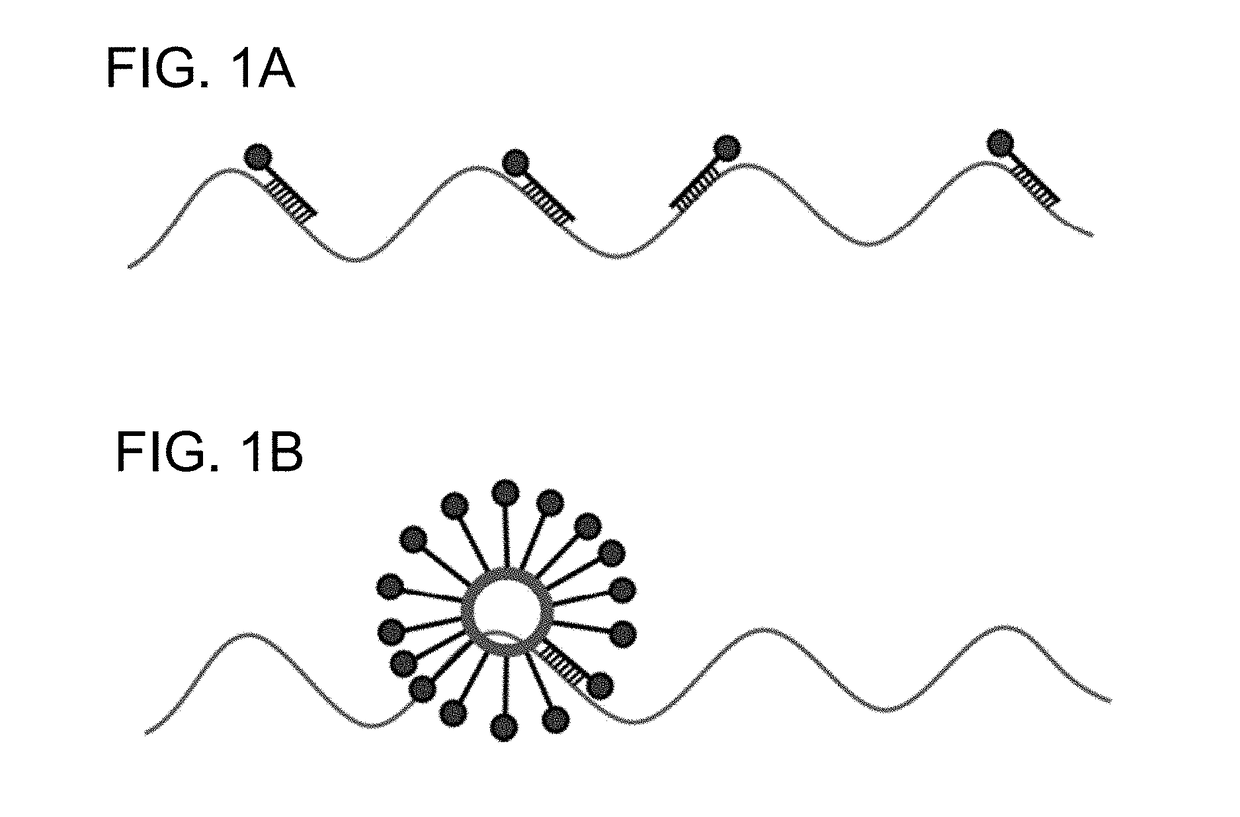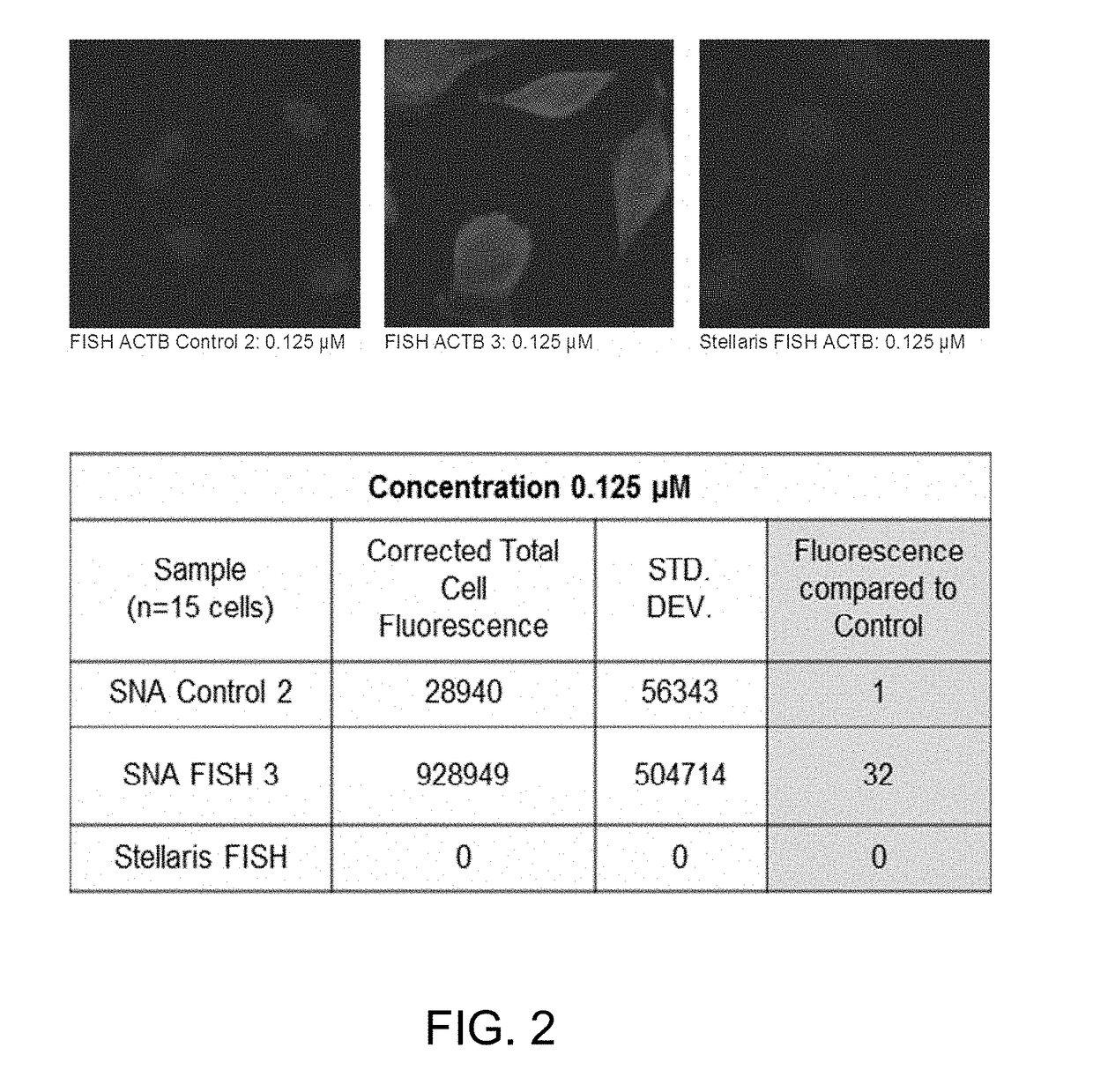Spherical nucleic acids (SNA) flare based fluorescence in situ hybridization
a technology fluorescence in situ, which is applied in the field of spherical nucleic acids (sna) flare based fluorescence in situ hybridization, can solve the problems of increasing cost and complexity
- Summary
- Abstract
- Description
- Claims
- Application Information
AI Technical Summary
Benefits of technology
Problems solved by technology
Method used
Image
Examples
example 1
[0084]A panel of oligonucleotides were 5′-modified with Cy5 and 3′-modified with a di-stearyl group and incorporated into small unilamellar vesicles (55 nm in diameter) composed of 1,2-dioleoyl-sn-glycero-3-phosphatidylcholine (DOPC) (FIG. 1) at a density of 100 oligonucleotides per vesicle. These L-SNAs FISH probes were tested for their ability to bind (β-Actin mRNA transcripts in fixed human cell lines for fluorescence in situ hybridization (FISH) imaging. Commercially available FISH probes (BioSearch Technologies) were used as a control.
Methods
A. Adherent Cell Fixation
[0085]Adherent cells are first grown on 12 mm round #1 Poly-L-Lysine coated coverslips in a 12-well cell culture plate for 24 hours prior to fixation. Growth medium is then aspirated, cells washed with 1 mL of 1× Phosphate Buffered Saline (PBS) RNAse free, and fixed for 10 minutes at room temperature in 1 mL of fixation buffer composed of 1:1:8 ratio of 37% formaldehyde solution, 10× PBS RNAse free, and nuclease fre...
PUM
| Property | Measurement | Unit |
|---|---|---|
| Temperature | aaaaa | aaaaa |
| Temperature | aaaaa | aaaaa |
| Fraction | aaaaa | aaaaa |
Abstract
Description
Claims
Application Information
 Login to View More
Login to View More - R&D
- Intellectual Property
- Life Sciences
- Materials
- Tech Scout
- Unparalleled Data Quality
- Higher Quality Content
- 60% Fewer Hallucinations
Browse by: Latest US Patents, China's latest patents, Technical Efficacy Thesaurus, Application Domain, Technology Topic, Popular Technical Reports.
© 2025 PatSnap. All rights reserved.Legal|Privacy policy|Modern Slavery Act Transparency Statement|Sitemap|About US| Contact US: help@patsnap.com


